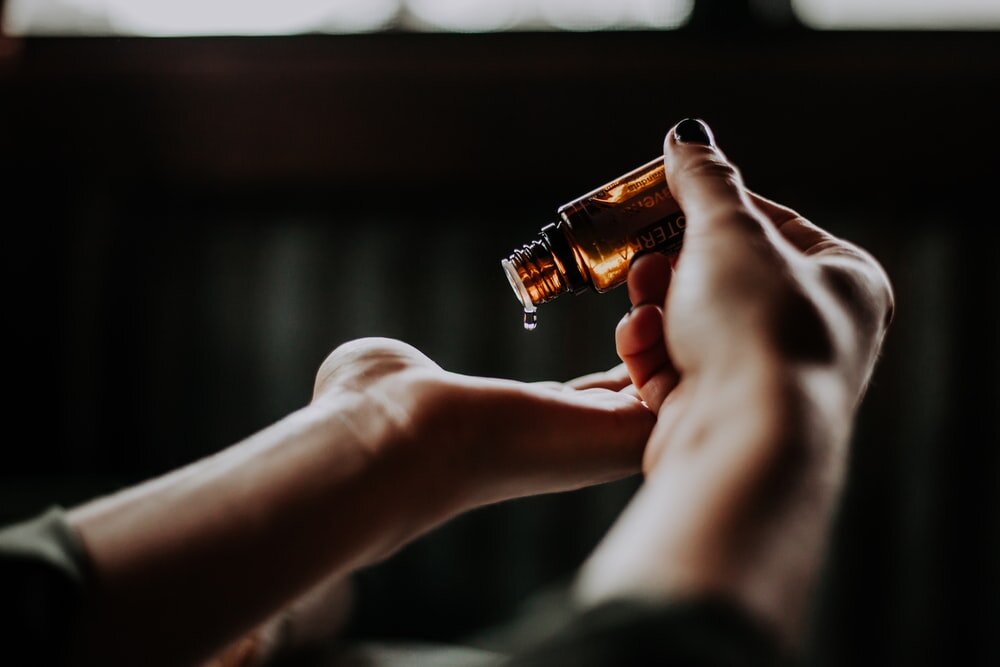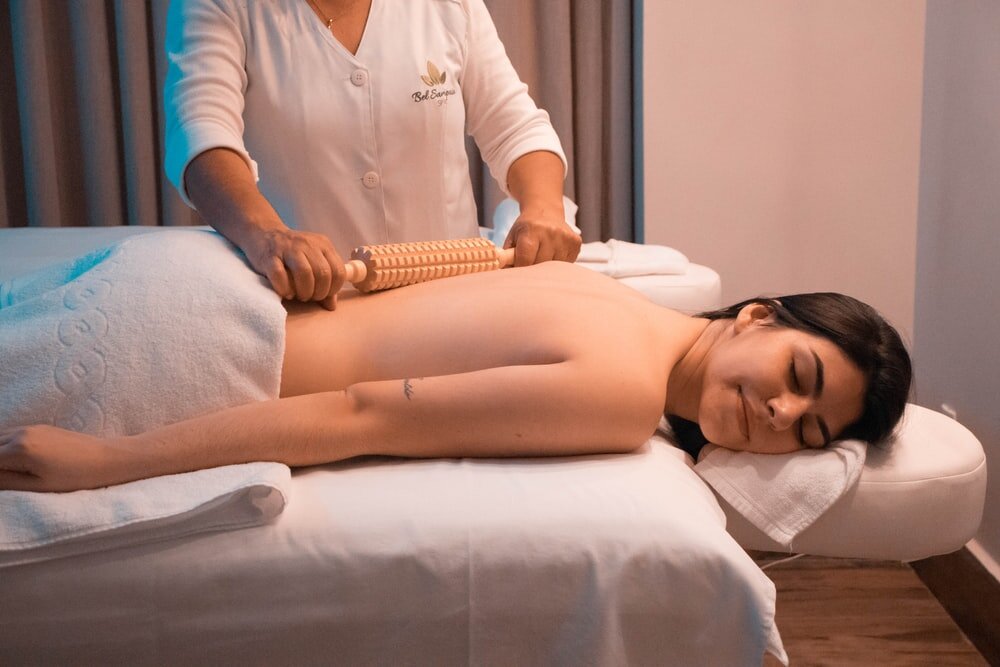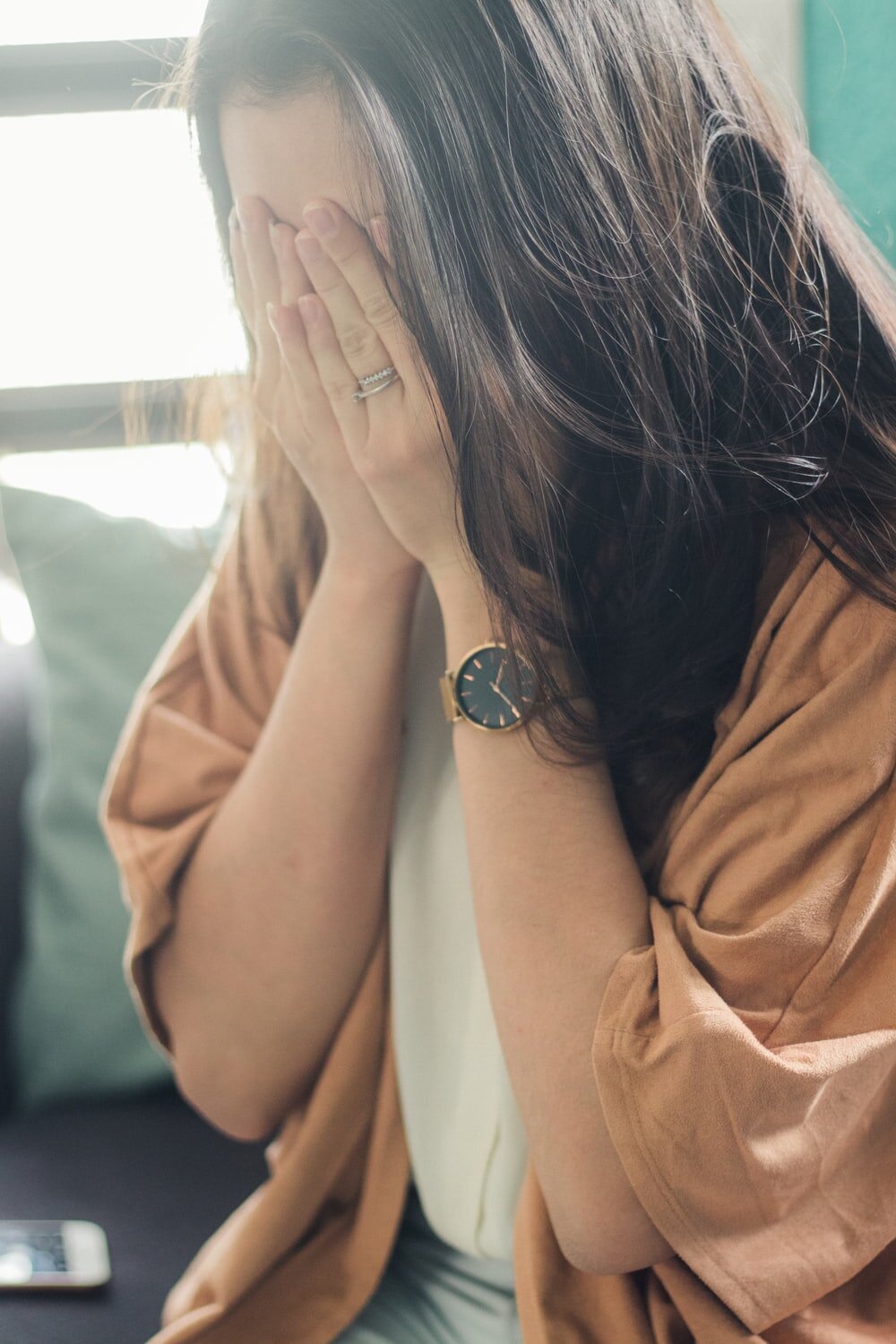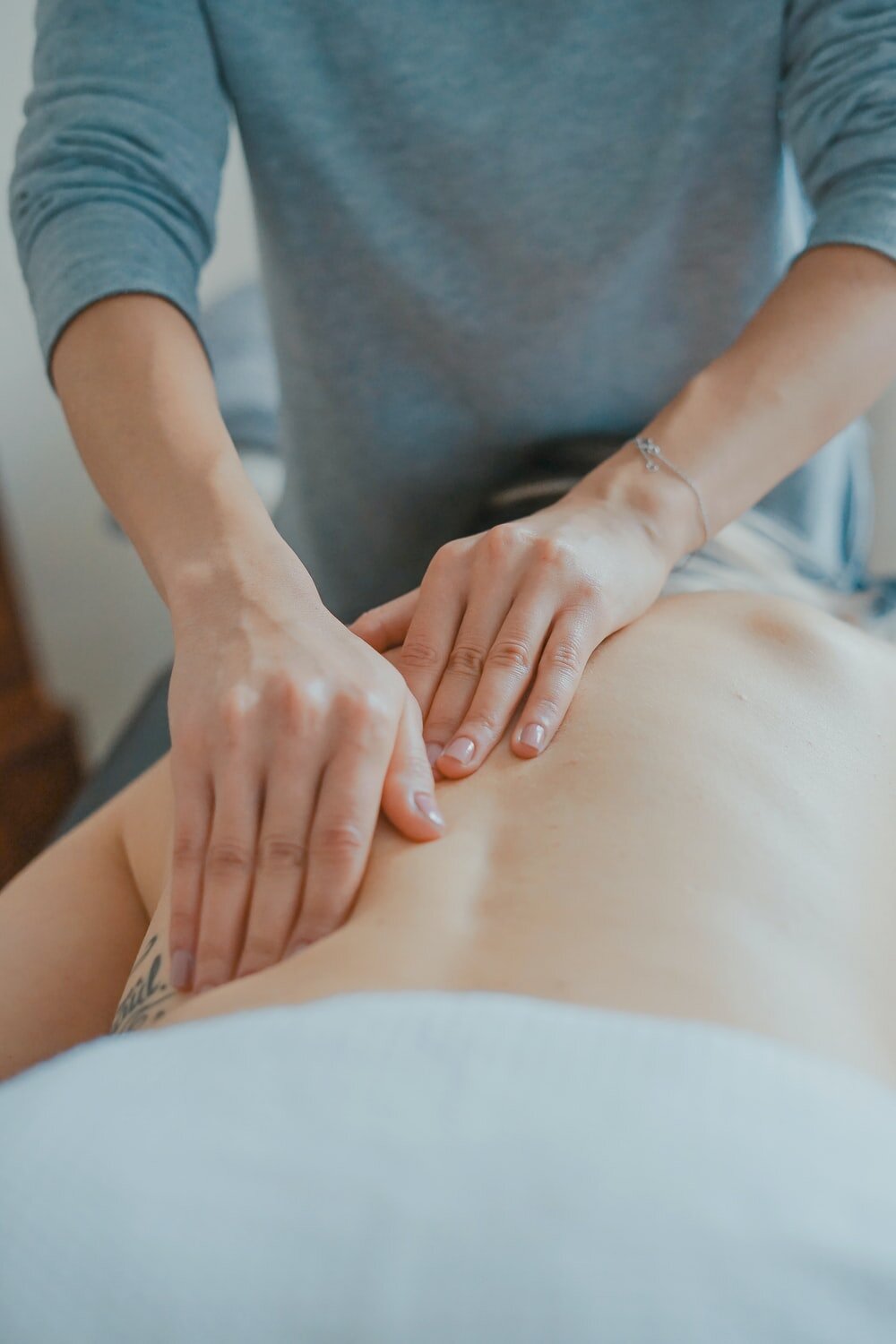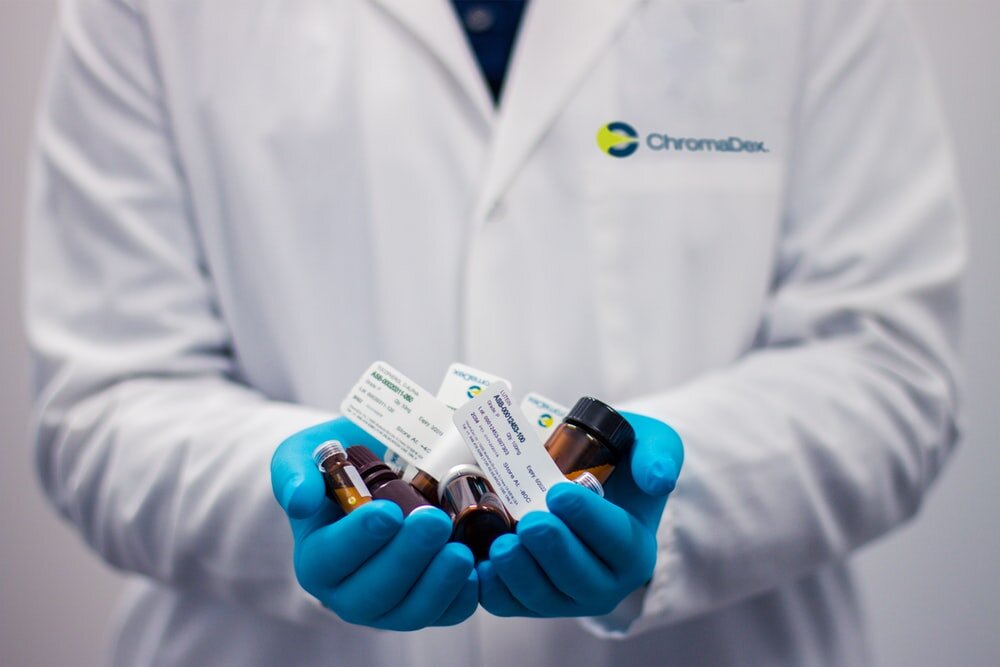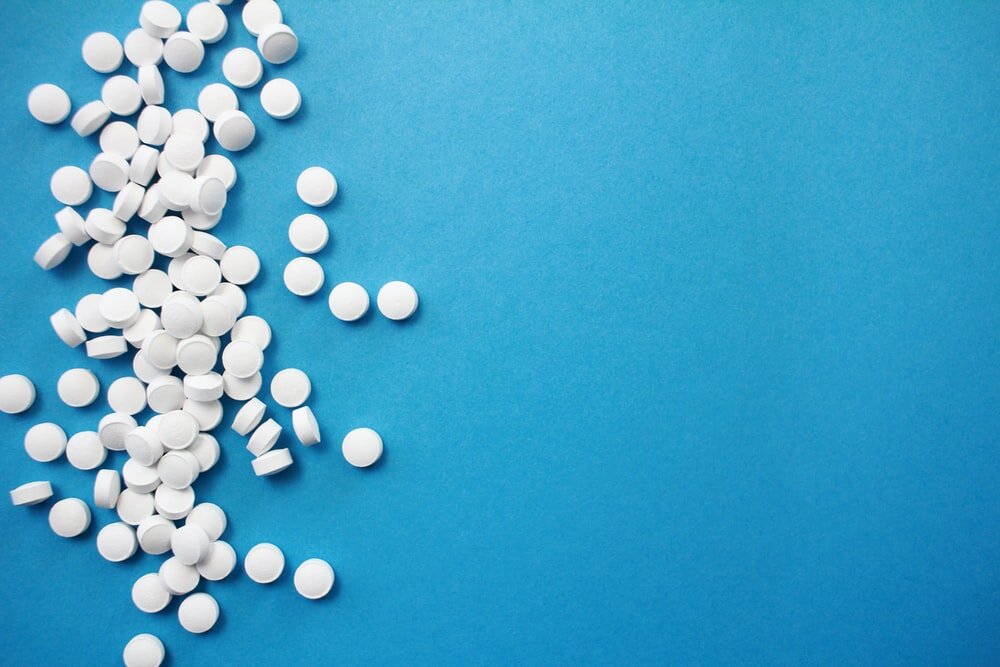Overcoming Chronic Pain with a Cervical Herniated Disc | How I Did It Naturally by Julie Taeko
Prologue
The intention of this article is to help those who may be suffering with chronic illness and specifically, chronic pain. It is meant entirely to help others. This is just one person’s experience and holistic approach to overcoming pain. However, one should find the best possible diagnosis, therapies, and opinions that are specific to his or her unique case. Everyone is different and everyone has different pain tolerance, so please utilize the best possible treatment plan for yourself under the direction of your primary doctor.
How Pain Became an Integral Part of My Life
A little over 2.5 years ago, I got into a series of bike accidents, one of which left me with a big gaping bruise on my chin. During this accident, I had too many groceries on my front bike basket when I hit a small bump in the road and toppled straight over my bike, hitting my jaw on the concrete floor, flipping my head back, and scraping both my hands. Fortunately, I was not seriously injured — or so I thought — and I had two young men right there at the exact moment to help me up and put all my groceries back on my bike.
Still, I was a bit shaken up and went immediately to the closest doctor for an X-ray exam. I found out that I had not broken anything in my jaw and chin area, and that I was completely fine. All of my bruises would go away with no long-term damage to my face. Lucky!
Diagnosing the Pain
Unfortunately, a few months later in July 2018 on the way to a Soka Gakkai Buddhist meeting, I started experiencing extreme pain in my right-side neck and upper shoulder area. I had no idea what it was, and for months it continued causing excruciating pain. All of my Buddhist friends began chanting for me and sending me positive prayers for my utmost health, speedy recovery, and good diagnosis.
I started visiting doctors in my area and upon completing an MRI — which by the way only cost $65 with my amazing Japanese national health insurance — I found out that I had a cervical herniated disc and early onset of arthritis in my neck. This was in September 2018.
Boy, was that a depressing moment. I was devastated. What did this diagnosis mean? What were my options? How did I get it? What was happening to me? How long would it last? Why me? I was young, healthy, and active — not the typical patient with a herniated disc.
The Insidious Nature of Cervical Herniated Discs
For those who don’t know, this kind of injury is extremely hard to cure, but most people can cure it naturally and heal over time. The majority of people have significant reduction in pain within 3 months. You can also opt for surgery, but it’s highly-risky and not recommended by most doctors and physical therapists — but keep in mind that surgeons will always recommend it. It also depends on your circumstances. Most people don’t have the luxury to rely on natural methods and minimal western medicine, so it really depends on how much time you can dedicate to healing naturally.
Leveraging Holistic Medicines — The Painfully Slow Path to Recovery
Since I did my best to leverage alternative, holistic medicines, pain was going to be my best friend for 2+ years. It was not going to go away that quickly.
I spent everyday chanting 3+ hours, going to rehab for ~30-45 minutes near my house, and trying all kinds of natural therapies. I started taking numerous supplements such as:
Glucosamine — This contains crustaceans and shellfish, so if you are allergic please, don’t use it.
Vitamin B1— If you take too much, you will excrete it naturally, just like Vitamin C.
Calcium / Magnesium
Multivitamins
Turmeric
Vitamin C
Also, I added garlic, salmon, and other anti-inflammatory foods to my diet. As you probably know, natural supplements are not a cure, and they take at least a month before they even have an effect. For any supplement you take, you should also inform your doctor and make sure you don’t overdo anything that cannot be naturally excreted from the body.
I met a beautiful hapa mixed-race woman in Bali who was a yoga teacher and had also suffered from debilitating pain. Once she started taking consistent natural supplements, she began to feel better after a few months. This, plus massages and other natural therapies, helped cure her pain.
I also read about mixing coconut oil with lavender essential oil and applying it directly to my skin, which worked quite well for me! I used it at night, as it was extremely oily and a strong smell. In addition, I applied Tiger Balm which had a wonderful cooling effect and helped me relax. In Japan, I could get these cooling pads from the doctor, so I got as many as I could.
When I moved back to the USA, I purchased Salon Pass and sticky heating pads that I could apply directly to my shoulder and neck area. Because I have hyper-sensitive skin, I had very little luck with hot and cold topical creams. Instead, I alternated using heating and icing pads. These, I purchased on Amazon.
Favored Natural, Long-Lasting Medicines Versus Fast-Acting, Perfunctory Western Medicines
In Japan, I tried everything natural that I could get my hands on — except pain killers. Since I was living alone in a foreign country and had 3 flights of stairs to climb up and down everyday, I didn’t want to risk getting more dizzy than I already was — one of the common side effects of ibuprofen, although not everyone gets it.
Everyday, I would experience vertigo and start panicking that I was going to faint, but luckily, I never did. Even so, there was no way I was going to infuse my body with medicine that could potentially exacerbate my already-dizzying symptoms. So I refrained from taking any western pain medications while living alone in Japan.
Every night, I took a hot bath with onsen materials, but epsom salts will also do the job, which would help relax my body and relieve my body of some of the physical stress I was experiencing.
My daily routine included:
Eating
Taking Supplements
Chanting Nam-Myoho-Renge-Kyo / Meditation
Going to Rehab for ~1 Hour
Applying a Mixture of Lavender + Coconut Oil Directly to My Skin
Doing 20-30 Minutes of Posture-Strengthening Exercises*
Applying a Heating Pad
Applying Ice Wrapped in a Towel
Taking a Hot Bath
Taking Magnesium at Night to Help Relax my Body
If you take everything into consideration, all of this self-help and natural healing methods actually eat up a bunch of time. Had I been working full-time, I never would have been able to focus so much on healing naturally. Fortunately, I was a student in Japan and could prioritize my health with longer-term, slower-acting holistic solutions.
*I did posture-strengthening exercises I got from 3 different doctors in Japan. I honestly can’t say how much it helped, but I’m sure it didn’t hurt. I was very careful, didn’t jump around, and I did it consistently for over a year. While it definitely helped improve my posture, I have since stopped doing it, favoring dancing indoors to improve range of motion and movement.
The Side Effects of Incessant Pain
The only time I could have a moment of solace and freedom from the incessant pain, was when I was eating. So I gained 10 pounds. This, was actually a good thing for me, as I had always been skinny. Even so, it was hard to manage my new weight. For example, I started experiencing lower back pain on my right side and knee pain in both knees at different times. When I asked the doctors for help, they explained it by pointing to my recent weight gain.
Since I was having neural and muscle-related pain, I wasn’t totally convinced. Plus, there was the ever-so-obvious language barrier and lack of time with the doctors to fully understand and feel comforted by all of the new and mysterious symptoms I was experiencing. Looking back, I was under immense stress — both physical and mental — so my brain probably exacerbated my symptoms and made it feel so much bigger than it really was. My body was physically not healthy and it was suffering constantly, so my mental health was also suffering as a result.
The Interconnected Reality of Physical and Mental Health
Even though I was doing everything in my power to overcome my chronic pain such as taking supplements, going consistently to rehabilitation, chanting and meditating 3+ hours a day, taking hot onsen baths, and doing posture-improving exercises, I still experienced depression and anxiety related to the uncertainty of everything that I was experiencing and the hopelessness of my situation. Plus, I just felt like it would never end.
Online I read that most people’s extreme pain lessens after a few months. However, I only started feeling relief after 1.5 years of daily, chronic pain. So of course, understandably, I felt a sense of powerlessness and hopelessness.
The Positive Effects of Chronic Pain
I had many amazing moments in Japan, such as the time when I pointed out to an arrogant doctor that he had prescribed me antibiotics instead of painkillers in both Japanese and English, and then he yelled at me for making a mistake.
This was a win for me, as I was courageous enough to stand up for myself and speak the truth. Also, I loved going to rehab although it was more superficial than helpful, because I became friends with all the physical therapists and some of the elderly patients.
It was a breath of fresh air seeing friendly faces everyday, and becoming “friends” with local neighbors. The same people came back day-after-day for treatment, and so did I. Eventually, I found better doctors and started visiting them, and made even more friends in Osaka and Kyoto!
Trying New Therapies and the Importance of Never Giving Up
When I came back to San Francisco, I went to a rehabilitation specialist and unique chiropractor who charged me $1000+ and didn’t make me any better at all. Still, I am glad I put in the extra effort to try new things and never give up, no matter how futile my efforts felt to me.
After visiting 5 different physical therapists in both Japan and the San Francisco Bay Area, I finally found an amazing holistic sports medicine specialist, who did cupping, massages, and targeted stretches and strengthening to help me loosen up my body and move more. This helped. This was the winning combination. And better yet, she was only a 10-minute walk away!
However, due to covid-19, she had to stop practicing. As a result, I resorted to indoor workouts that encouraged movement such as cardio dancing, which helped me release both mental and physical stress — a win-win situation! This also helped loosen my body and most of the time, improved my symptoms and lessened my physical pain. Coupled with massages from my partner, hot baths at night, and meditation, I was able to sleep better — sometimes sleeping 9 hours. For 2 years now, I have been sleep-deprived due to the persistent pain I feel in my neck at night.
For me, time and focusing on improving my health with anything that I knew worked, was the key to sleeping better and slowly but surely overcoming my incessant, debilitating, persistent, chronic pain. I also had the great fortune of having a partner who was willing and able to massage me for hours every day. Thankfully, after about ~9 months in the USA, I finally started to sleep better.
Trying Other Alternative Medicines and Treatment Options
Something that was highly recommended to me was acupuncture. However, I do not like needles and had to overcome that mental hurdle. But I was also willing to try everything since I wanted to cure my pain. So I seriously considered going and found a few places close to my house and some that were covered by my health insurance. But then covid-19 lockdown began, and that option went out the window. That being said, I highly recommend acupuncture as an alternative treatment option. Those who used it, swear by it, although it does take a few months before you will feel any significant difference.
I’ve tried at least 20 different pillows, and one of my best friends in Kyoto, even gave me a few of her pillows, so I could try more. I ended up with a shredded memory foam pillow that I could adjust to varying heights to see which height caused the least amount of pain. But the bottom line was that until my pain lessened, I wasn’t going to be able to sleep better, more deeply, and longer. That’s why one orthopedic doctor recommended that I take muscle relaxants, which helped briefly, but wasn’t a viable, long-term solution for me. It definitely helped me sleep longer, but it didn’t allow me to sleep deeply, so I woke up feeling fatigued.
One good friend recommended a TENS unit to help massage you, but I haven’t tried it as I don’t need more products. Another good friend of my partner recommended a massaging device, which I strongly considered, but I already had two heating pads that were quite effective, and a large foam roller, so I didn’t think I needed another thing.
I also bought a cervical neck traction device on Amazon after getting a recommendation from a good friend who had a herniated disc in his back. I used this for a few weeks, but did not see any demonstrable changes. We also bought a hammock neck stretching device, but I was too scared to try it, so I didn’t end up using it.
As a side note, I had the great fortune of going to rehabilitation every day in Japan, where they have you do the following:
Neck Traction | 90% Helpful. 10% Painful.
Physical Massage | 100% Helpful.
Electrical Node Therapy | 30% Helpful.
Heat Therapy | 75% Helpful
Electricity Pulsing Massage Therapy | 30% Helpful.
After trying these different therapies in Japan, I knew what worked for me and what did not. In America, it seems like you have to buy everything on your own and try it at home, because physical therapy is too cost-prohibitive for most, unfortunately. That’s why you can buy neck traction devices and many medical devices over the counter.
Ideally, you can do what I did, and get one-on-one treatment first before purchasing any devices online.
Leveraging Western Medicine When Absolutely Necessary
Beyond physical therapy, I also tried to take more western medicine as I now had to work full-time and live a more “normal” life. I tried muscle relaxants that were prescribed by the doctor, for example, but I got slightly addicted to them, meaning that when I stopped taking them, I experienced insomnia. So I disliked using it and stopped after 10 days of the lowest possible doses.
I also tried ibuprofen, but was extremely careful with this too, and used the absolute minimum doses possible. In essence, I was micro-dosing with ibuprofen and I occasionally mixed in Benadryl. I noticed that ibuprofen caused my brain to stay awake so I stopped using it as well. According to my fitbit, I would get less deep sleep anytime I took ibuprofen. On the flip side, whenever I took Benadryl, I had more deep sleep, and as a result, I felt more awake, well-rested and most importantly, in less pain. However, even with such positive results, the effects of western medicine or any medicine, deteriorated over time, so I didn’t want to rely on it and used it sparingly.
I also did a lot of research. Some people use CBD oil topically, so I bought some on Amazon USA (they don’t sell it in Japan. It’s still highly illegal) and tried it but it was less effective than my lavender essential oil + coconut oil concoction.
Deeply Grateful for My Experiences of Chronic Pain of 2+ Years
Looking back, I was incredibly fortunate to have a mother in America who was chanting constantly for me to recover. I was also fortunate to have the time to chant 3+ hours a day, as I was a proactive student and had done 90% of my work in advance! Thus, I could focus entirely on healing, trying new therapies, and conducting research. I had many great friends nearby and buddhist friends who offered to help with anything I needed and chanted abundantly for me!
Also, I had the time to focus on improving my symptoms once I was back in America, and found an amazing doctor relatively quickly. All of my experiences of trial and error, have made me a stronger person who can withstand more mental and physical pain than I ever thought possible.
I feel so fortunate to have had such trying circumstances, and deeply grateful to all of the amazing people in my life who massaged me for hours, chanted for me for hours, provided me with sage advice and wisdom, and encouraged me when I was feeling the most hopeless.
Thank You Everyone for Your Help!
I am very proud to announce that I am 90% pain free 2 years after starting to have pain, and I am grateful for all of the experiences I had that helped make me become a more compassionate, stronger, and wiser person! Hopefully, this will help others alleviate pain.
Thank you for reading this article!














